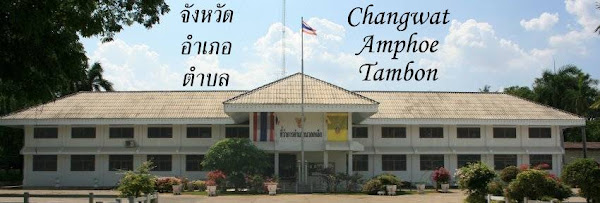 The controversial Ramkhamhaeng stele is the oldest proof of the administrative subdivision of a Tai kingdom, as well as the oldest written text in Thai script. Some scholars doubt the authenticity of this stele however, claiming it was written much later due to linguistic oddities, while others strongly doubt it could be made up in the 19th century as it refers to places rediscovered in the 20th century and long forgotten when the later King Mongkut discovered the stele in 1833. A whole collection of papers on this topic was published by the Siam Society in 1991, however I have only one of the texts within that collection - David K. Wyatt's Studies in Thai History contains the one titled Contextual Arguments for the Authenticity of the Ramkhamhaeng Inscription.
The controversial Ramkhamhaeng stele is the oldest proof of the administrative subdivision of a Tai kingdom, as well as the oldest written text in Thai script. Some scholars doubt the authenticity of this stele however, claiming it was written much later due to linguistic oddities, while others strongly doubt it could be made up in the 19th century as it refers to places rediscovered in the 20th century and long forgotten when the later King Mongkut discovered the stele in 1833. A whole collection of papers on this topic was published by the Siam Society in 1991, however I have only one of the texts within that collection - David K. Wyatt's Studies in Thai History contains the one titled Contextual Arguments for the Authenticity of the Ramkhamhaeng Inscription.Praising King Ramkhamhaeng (ca. 1239–1317) achievements for his kingdom, it also lists cities (Mueang) and minor kingdoms under the overlordship of Sukhothai in the last part of the fourth side. However this does not mean that these areas were part of a nation-state like the modern-day Thailand, all of these were rather independent kingdoms on their own who just had swear an oath of allegiance to the overlord, pay tribute and help in case of a military conflict.
- East: Sara Luang, Song Khwae, Lam, Bachai, Sakha, Wiang Chan, Wiang Kham
- South: Khonti, Phra Bang, Phraek, Suphanaphum, Ratchaburi, Phetchaburi, Si Thammarat
- West: Chod, … (unreadable) , Hongsawati
- North: Phrae, Man, N… (unreadable), Phlua, Chawa
The whole inscription in both Thai and English together with a little more on the controversy around it can be found in this blog posting, while here there are photos of the original piece.

No comments:
Post a Comment